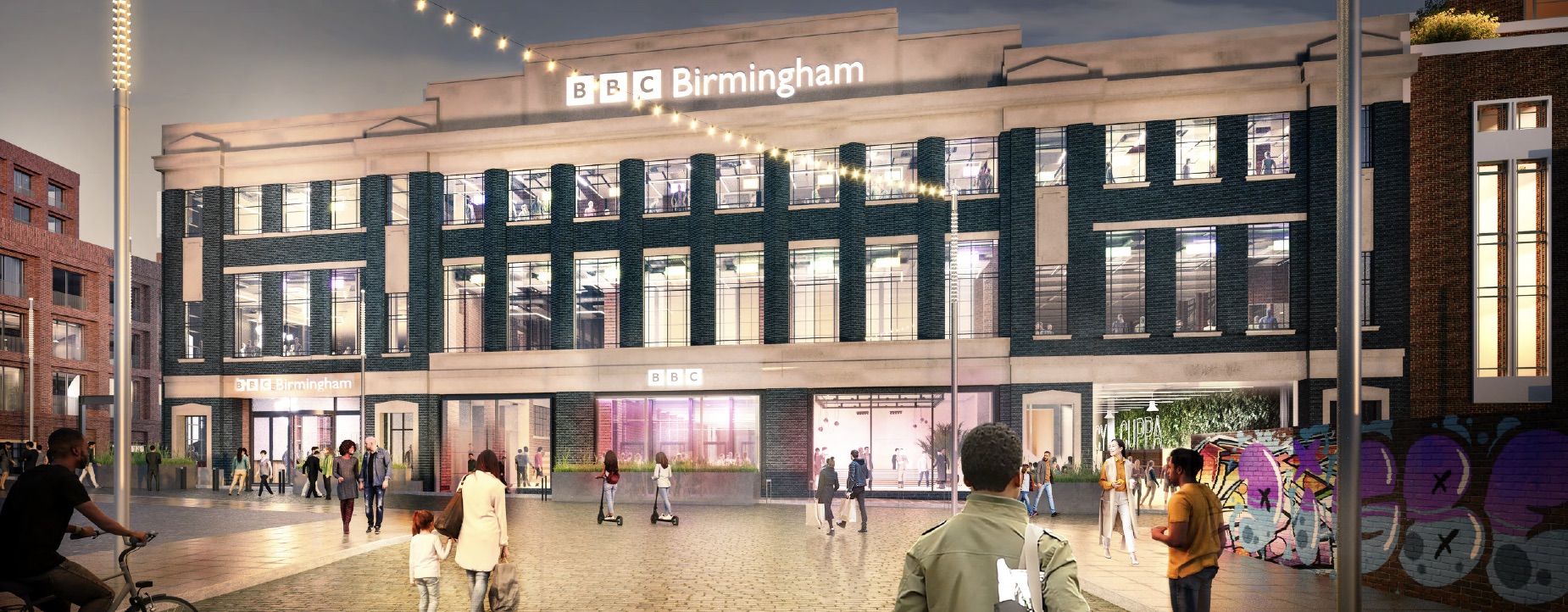Ambitious plans for Birmingham will help establish city’s green credentials.

The new BBC Tea Factory, Digbeth. Credit: Glenn Howells Architects.
Birmingham is already reaping the benefits of growth from business investment, the development of its universities, the influence of HS2, and the successful legacy of the 2022 Commonwealth Games. The Birmingham 2040 Framework shows how potential investment and development could transform Birmingham into a healthier and more sustainable place to live, work, and visit. We are already witnessing investment in transport infrastructure, mixed-use development, tall buildings, residential developments, and elevated green spaces to meet the needs of the city’s current and future populations.

Transforming Central North: ‘Birmingham’s Knowledge Quarter’ rises with innovation and progress. Credit: Associated Architects, Ben McPhee
Significantly, Birmingham City Council has set high targets to reach Net-Zero by 2030. Over the next 20 years, the distinct neighbourhoods will become fully interconnected, enabling residents and visitors to easily traverse the area via walking and cycling routes. Workplaces, leisure facilities, and shops will be accessible without cars, helping to reduce CO2 emissions. Another major theme of the Framework is to adapt underutilised buildings within the city centre, making way for revitalised streets and public squares.
The 2040 vision will also significantly transform the Central North district, home to a cluster of educational institutions known collectively as ‘Birmingham’s Knowledge Quarter’ and a fast-growing technology sector of over 170 firms. The city’s policymakers want to grow this hub of research, learning, and development. Enhanced employment opportunities will be bolstered by strengthened transport connections, with 38-minute trips to London via HS2 and a metro extension connecting to Digbeth, Edgbaston, New Street, and on to Wolverhampton. The proposals cover 20-hectares around Aston University, including existing property assets and sites owned by the University of Birmingham and Birmingham City Council, such as the former Aston Science Park, and Bruntwood SciTech’s Innovation Birmingham campus.

The Exchange, an award-winning new Grade II-listed heritage university building
MGAC is privileged to play a role in Birmingham’s sustainable future, as we have been working on some of Birmingham’s most exciting flagship projects. For example, one multi-million-pound development will deliver a 84,000 ft² purpose-built media facility: BBC Tea Factory in Digbeth. Significant embodied carbon savings will be made by converting an existing building instead of creating something new. The aim is to deliver one of Birmingham’s first Net-Zero Carbon buildings by 2026. The building will be gas-free, with 750 m² of solar panels, air source heat pumps, rainwater recycling facilities for WCs, 16 electric vehicle charging points, and a brown roof, in the interest of local ecology.

We have also recently delivered (as cost consultant) The Exchange, an award-winning new Grade II-listed heritage university building, as well as providing Employer’s Agent and cost management services for Enterprise Wharf. This unique project will create Birmingham’s first truly smart-enabled building, offering 120,000 ft2 of contemporary, flexible office space across 10 floors. It will bring Building Management Systems, HVAC, Lighting, CCTV, and green energy data to life with the use of Internet of Things (IoT) Technology, allowing energy use to be managed and optimised. To achieve Net-Zero Carbon and an EPC A-rating, it will utilise 100 m2 of photovoltaics and a combined air source heat pump and chiller system that will enable high-efficiency heating, heat recovery and cooling, as well as exterior optimisation and thermal efficacy that will minimise the need for internal lighting. Progressive developments such as these show Birmingham can a be a leader in sustainable development, not just in the Midlands region, but across the UK.
The ambitious 2040 plans represent the next phase of Birmingham’s evolution to become one of the UK’s greenest cities, as well as a centre for technology and innovation. We believe this can be achieved if architects, policymakers, developers, creatives and, most importantly, the people of Birmingham work together to realise these aspirations.
by Chris Barker, Executive Director, MGAC







